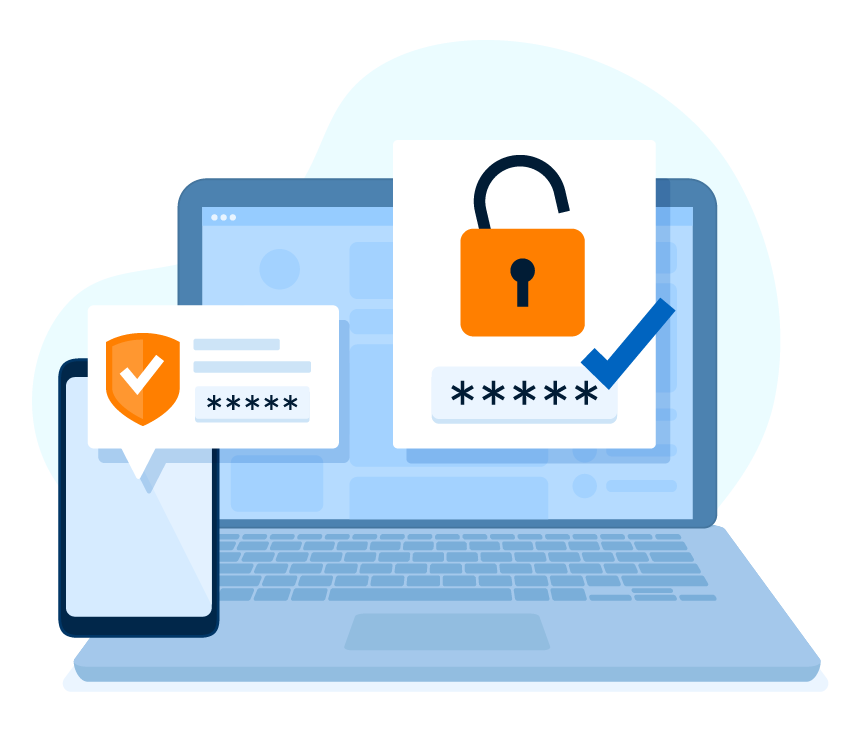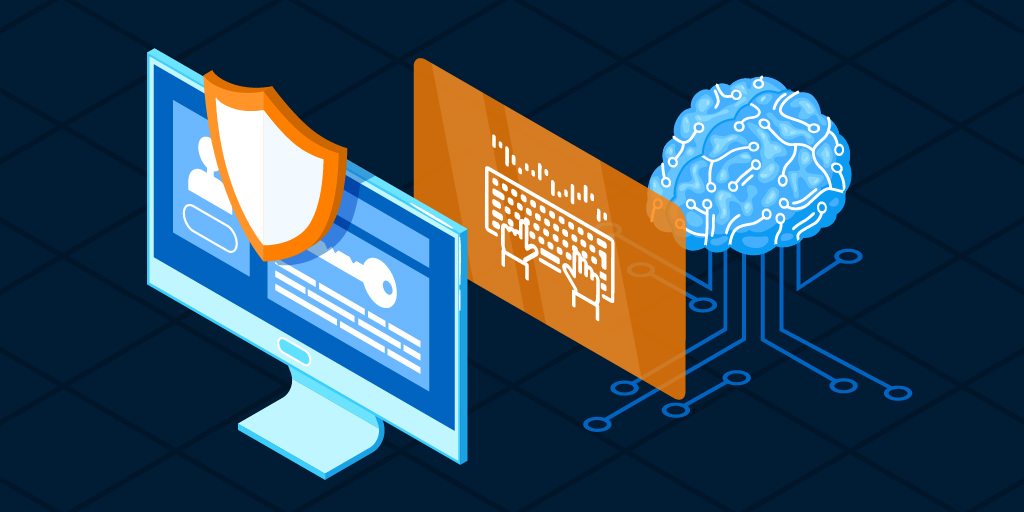The need for a robust and secure MFA solution is obvious with the rise in frequency (and sophistication) of cyberattacks. IS engineers and product managers frequently struggle to choose between the ease of integration, security, and end-user experience when optimizing their MFA. In this article, we’ll share an AI-powered MFA setup that answers not only the integration concerns that IT departments might have, but also addresses questions about user adoption and great UX.
This article highlights the benefits of an AI MFA setup and shows you how integration is possible in less than 10 minutes.
What is an MFA setup?
A multifactor authentication (MFA) setup comprises various factors that offer better protection beyond a single factor of authentication. Most MFA setups are configured to include different factors like possession (e.g. SMS OTP), knowledge (e.g. password), or inherent (e.g. typing biometrics).

Why is MFA needed?
MFA is essential to better security since malicious actors can easily compromise accounts that rely on a single authentication factor, like passwords, using methods such as credential stuffing or password spraying.
Best practices for an ideal MFA setup
Set up MFA upon initial login
The ideal MFA setup will start with the first user interaction upon initial login. By accommodating your users with MFA and setting up the authentication factors, customers or employees can benefit from stronger security. If handling sensitive personal information or credit card data, app developers and designers should opt for an MFA setup that uses an inclusive range of authentication factors that users can choose from.
Enable MFA for high privileged roles
Some roles in your organization will have access to essential company assets. Role-based access control (RBAC) considers the predefined job roles to grant access to individual systems and information. A typical example of a privileged job role is the HR employee that will most likely have access to other employees’ confidential data like benefits. Make sure these employees are logging in by completing the steps of multifactor authentication. Most known corporate breaches have been possible using the weakest link available; sometimes, a bypassed MFA setup is corroborated with a recycled password.
Benefits of AI-Powered MFA setup
Combining typing biometrics with other authentication factors such as SMS OTP results in a robust and stealth account protection part of an AI-powered MFA system. Typing biometrics is an emerging technology first introduced decades ago. Due to the advancements of computational power, capturing and analyzing typing patterns to be matched with previous samples results in a secure authentication method to verify users’ identities.
Typing biometrics, also known as keystroke dynamics, relies on each individual’s particularity with a specific typing rhythm. TypingDNA Verify 2FA results from more than 5 years of intensive research resulted in proprietary AI-based algorithms that analyze how people type on their keyboards. Verify 2FA works by matching the initial typing patterns captured during enrollment, against the way users type during authentication. If the match is successful, users are granted access to the web app. Note, unlike fingerprint or iris scans, typing biometrics has proven to be quite challenging to reproduce.
By deploying TypingDNA Verify 2FA, you enable an AI-Powered MFA setup consisting of two components. The AI-powered engine analyzes the typing patterns, matching them with previously enrolled samples. The second component of AI refers to selecting the best key phrases for higher matching accuracy on much shorter texts. Users only have to type four words from which the typing pattern is easily established.

Leverage the benefits of an AI-powered MFA setup
The benefits of deploying TypingDNA Verify 2FA range from a customizable authentication flow to high security, and ease of use. Below, we highlight the most important characteristics an AI-powered MFA setup should have:
Security
Ideally, an MFA implementation will be determined by the performance and protection it will offer protection of the used technology. Factors such as knowledge, inherence, or possession often consist of using sensors, devices, and other types of technology to authenticate users. A common characteristic of a robust MFA setup refers to the threshold of security that the MFA is providing. For example, a misused login attempt could be a gateway to very sensitive data in government institutions, industrial IPs, or medical breakthroughs. Therefore, the chosen factors in an MFA flow must respond to the security needs of your users, be it customers or employees. Strong security can be achieved by deploying a behavioral factor that is challenging to duplicate, such as typing biometrics. Due to the unique blend of physical traits utilized and one’s behavior, the typing biometrics technology is known to be hard to spoof.
Ease of use and adoption
Choosing the right factors in an MFA setup while balancing UX and deployment is not easy. For example, product managers and security specialists might be forced to choose between the ease of use for the authenticating user or the ease of deployment for the IT department. In addition, long hours of support and maintenance might affect the business as much as a bad end-user experience can.
But the right balance of security and user convenience is possible. TypingDNA Verify 2FA was designed as a better alternative against existing authentication methods, most of which add too much friction for the end-user.
Verify 2FA addresses many concerns businesses have when it comes to the right authentication solution. For example, burdensome user experience turning the onboarding process in a churn creating a step in the user journey, the inability of some user groups to authenticate with unknown measures like hardware tokens, or malfunction in various scenarios like lack of service or lost devices.
Also, various demographic groups prefer different authentication methods. It is also known that millennials prefer texting over calling if they had to choose one form of communication.
All these concerns are addressed with TypingDNA Verify 2FA, which allows an in-band MFA setup, guaranteeing ease of use for users, even for the non-technical ones. Above all, typing biometrics is non-disruptive to the user, creating a smooth authentication experience.
Scalability
Businesses usually operate with fluctuating figures such as contractors or varying numbers of clients and need a flexible solution. The benefit of an Authentication as a Service (AasS) solution like Verify 2FA is that the growing need for authenticating customers or employees can be met with little effort. Flexible paying options were carefully created to accommodate the needs of companies of all sizes, be it a large enterprise or a newly launched start-up.
Compliance
It’s important to follow security protocol recommendations. An essential part of an MFA setup is to keep up with the latest compliance requirements. The most important ones are NIST SP 800-53, HIPAA/HITECH, and EBA’s PSD2. Also, when working with EU citizens, keep GDPR in mind. Finally, look for vendors that can accommodate the requirements mentioned in the protocols listed above.
How to setup MFA in less than 10 minutes
Setting up complex software deployments can sometimes take weeks or even months. Knowing this, most software developers or product architects sometimes choose software that is easy to configure, even if it’s detrimental to user experience or adoption.
When choosing your MFA solution for SaaS authentication, ease of integration or compliance with security policies and standards should not be the only determining factor. With TypingDNA Verify, 2FA is a solution designed to accommodate both the user expectations and the developers’ needs. 2FA AI-based technology is easily adopted by end-users such as customers or employees and can be configured and deployed in less than 10 minutes.
PHP is one of the most popular server-side scripting languages used to develop websites or Web applications. The tutorial shows the steps for integrating TypingDNA Verify 2FA with a web application that uses PHP as the back end.
Want to see TypingDNA Verify 2FA in action? Check out the live 60-second TypingDNA Verify 2FA demo.

